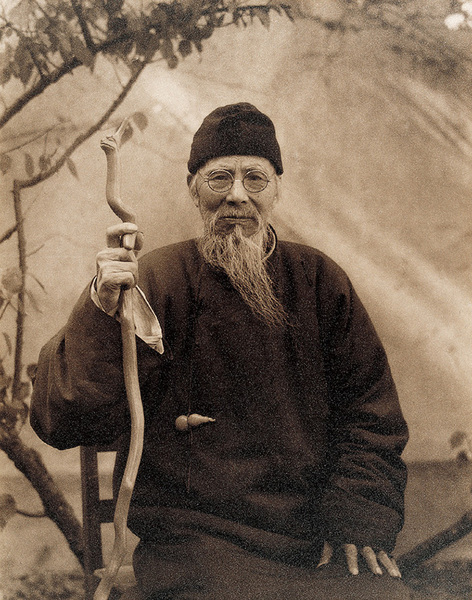Qi Baishi

"Paintings must be something between likeness and unlikeness, much like today's vulgarians"
Brief Background
Qi Baishi (Chinese, 1864–1957) is considered the most popular painter in 20th century China. Born in Hunan Province, he painted in a traditional Chinese style, despite having no formal training in painting or calligraphy. Qi is best known for his works featuring flowers, trees, and small animals, such as birds, mice and shrimp. During the 1900s, Qi made his first trips to Shanghai, where he was significantly influenced by the Shanghai School and the artist Wu Changshou (Chinese, 1843–1927). He moved to Beijing c.1918, and developed a friendship with the painter Chen Shizeng (Chinese, 1876–1923), whose work further inspired Qi's own artistic style. While painting established Chinese themes free from Western influence, Qi distinguished himself by creating a prolific body of work featuring unique compositions and bold color schemes. His paintings are admired not only by Chinese citizens, but also by art scholars and international collectors. One of Qi's works sold at the China Guardian 2011 Spring Auctions in Beijing for more than US$65 million.
Timeline
- 1864 — Born in Xiangtan, Hunan Province, China
- 1878 — Became a carpenter and learned to paint by himself
- 1899 — Became a student of Wang Xiangyi, one of the most influential scholars of the time
- 1917 — Settled in Beijing, China and llived by his painting and calligraphy
- 1927 — Started to teach traditional painting at the Beijing Art Academy, Beijing, China
- 1952 — Appointed Honorary Professor of the Central Academy of Fine Arts, Beijing, China
- 1953 — Became Chairman of both the Chinese Panting Research Society of Beijing and the Chinese Artists' Association
- 1955 — Honorary fellow of thr East Germany's Academy of Art
- 1956 — Awarded the World Peace Prize by the World Peace Council
- 1957 — Named Honorary President of the Beijing Studio of Traditional Chinese Painting, Beijing, China Died: in Beijing, China